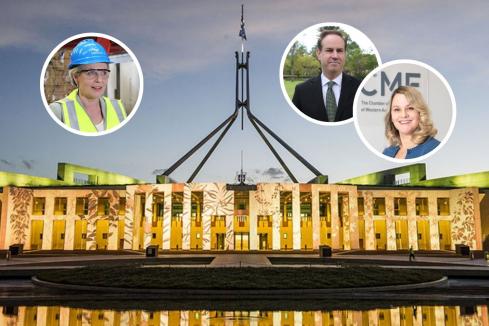Providing medical assistance to astronauts in space isn’t any crazier than flying planes around Australia 90 years ago, Royal Flying Doctor Service WA chief executive Rebecca Tomkinson told a Business News Success and Leadership breakfast this morning.


Providing medical assistance to astronauts in space isn’t any crazier than flying planes around Australia 90 years ago, Royal Flying Doctor Service WA chief executive Rebecca Tomkinson told a Business News Success and Leadership breakfast this morning.
Ms Tomkinson was outlining her vision of how the organisation might develop over the coming decade.
She explained that RFDS founder John Flynn’s idea took more than a decade to come to fruition, with some, even at the ten year mark, calling it an ‘experiment’.
“What I love about that is no-one believed it would actually work and 90 years on, not only does it work but we have taken ourselves from a single plane to a dual ability, to take two patients, to our latest step, which is truly an emergency room in the sky with the three stretchers and the two medical team capability, it’s just amazing,” Ms Tomkinson told the forum.
She suggested a future step could be looking after astronauts in space.
"Who better, than our good selves, to be able to provide it in a decade's time."
The organisation’s innovation was recognised this year, when it surprised the Perth business community by being named the best technology company in 2019 at the INCITE Awards for the fit-out and performance of its Rio Tinto Lifeflight PC-24 jet, which it acquired with contributions from Lotterywest, Rio Tinto and the federal government.
“We are the very first in the world, anywhere to use that aircraft, for aeromedical retrieval,” she said.
“We are also the very first to bring it into the Southern Hemisphere, we are the first to use it in Australian airspace.”
Apart from space assistance, Ms Tomkinson said over the course of the next ten years she wanted to see the organisation expand and extend its services.
“(We are thinking about how) to really embrace Aboriginal health outcomes and to make our mark on improving intergenerational health capability of really ensuring we are meeting the needs of Aboriginal communities and how we can provide and support,” she said.
“Also expanding our primary health across the different regions, looking at how we can embrace technology and change as an organisation.”
The rate of change was one of the challenges standing in the way of these goals, she said.
“We run the real risk of not being able to innovate our systems and our technology fast enough and, pardon the airline pun, but literally not taking off in time, is a very real challenge,” Ms Tomkinson said.
“Our funding structures are complex and they are not without a lot of investment that needs to happen… that could get in our way if we can’t continue to tell our story and cut through what is a very very busy, noisy environment in the philanthropic and fundraising space.
“Really investing in our people is incredibly important and without being able to do that, that will get in our way.”
Ms Tomkinson, who grew up in the Pilbara before moving to the Wheatbelt and now runs one of the largest not-for-profits in WA, did not follow a traditional path to leadership after not receiving a high enough score to enrol in university.
“When that envelope came, I fell short and I was quite upset about this and I remember talking to my parents saying, ‘This is devastating, what are we going to do?’” she said.
“They just looked at me and said, ‘What are you going to do next? Get on with it’.”
Ms Tomkinson said her parents made her understand that if she wanted something, she was going to have to make it happen.
After doing a course at TAFE in Midland, Ms Tomkinson studied community development at university and went on to work in local government, politics, at Bankwest and MercyCare.
Now, after two years as chief executive at RFDS, she said leading the organisation gave her the ability to redefine what the organisation was.
When she first started she asked the team what was unique about the organisation and the feedback she received was that they were the Royal Flying Doctor Service.
“And I went, ‘Well, no, what is it that we deliver that is not being able to be provided by anyone else?’” Ms Tomkinson said.
“How do we continue to innovate and serve the West Australian community and make sure we are at the very edge of that design and that technology?”
“It’s lazy for us to just rest on the fact that we have been here for 90 years so therefore we always should.
“My sense of that is that what I want to be able to provide is the agility and flexibility for the organisation to lead and itself for the next 100 years and to really bring the story to life.”
As one of the few women chief executives in WA, Ms Tomkinson said it was incredibly important to be visible as a female leader.
“I hope by sitting here, that I make that journey a little bit easier for other people and not just women but people from Aboriginal cultures, from non-English speaking backgrounds, there’s a whole range of diversity that really needs to sit at leadership level and in corporate board rooms and across decision making entities,” she said.















